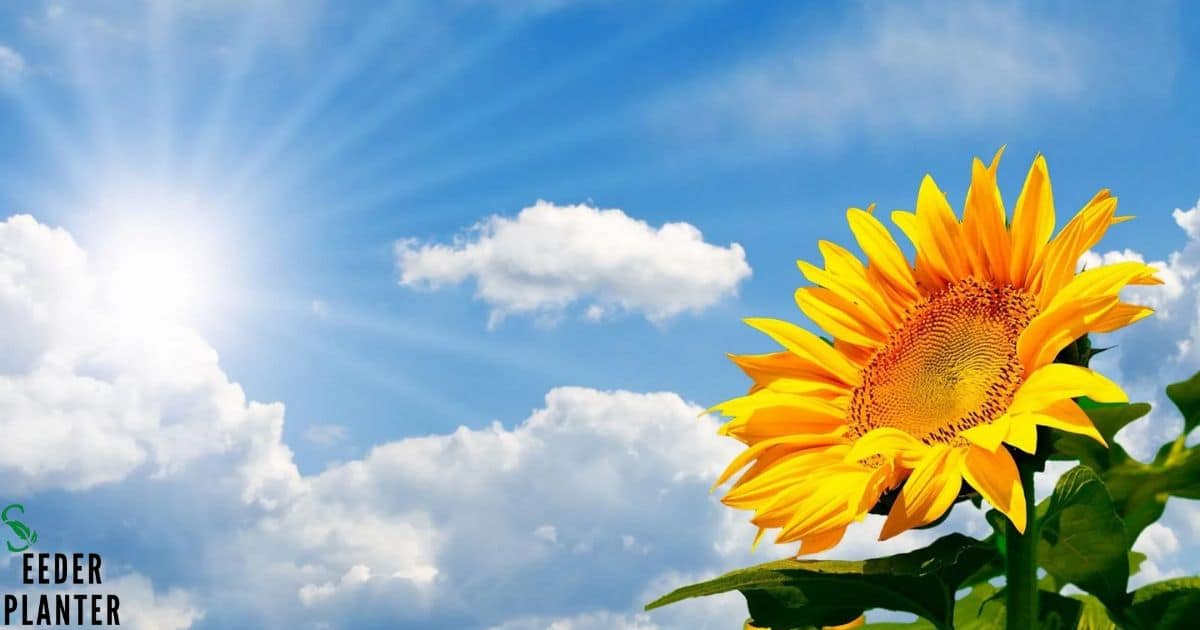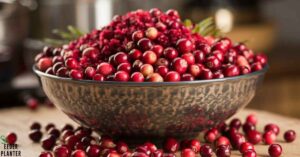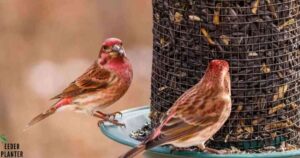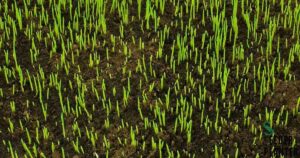Mammoth Sunflower Seeds refer to the large seeds produced by the Mammoth Sunflower. It is a variety of sunflower known for its towering height and oversized flower heads. These seeds are commonly consumed as a snack or used in cooking.
Standing tall with majestic blooms and boasting seeds of grandeur, the Mammoth Sunflower commands attention in gardens and fields alike. Ever you wonder about How To Plant Mammoth Sunflower Seeds? With its towering stature and oversized flower heads, this sunflower variety not only captivates the eye but also yields Mammoth Sunflower Seeds.. Brace yourself for a journey into the world of towering beauty and bountiful goodness.
Characterized by large, bright yellow flower heads that can span over a foot in diameter, it adds a majestic presence to gardens and landscapes. Beyond its aesthetic appeal, the Mammoth Sunflower produces seeds of notable size, commonly referred to as Mammoth Sunflower. These seeds are not only favored for their delicious, nutty flavor but also for their nutritional value. These are valued for their rich nutritional content, including healthy fats, protein, and various vitamins and minerals.
Different parts of Mammoth Sunflower
There are different parts Which are explained in detail.
- The Seeds
- The Leaves
- The Stems
- The Roots
The Seeds
Mammoth Sunflower Seeds are valued for their rich nutritional profile, providing a source of healthy fats, protein, and essential nutrients. These seeds are not only a tasty snack but also contribute to a well-rounded diet. Additionally, they hold significance in gardening, as the Mammoth Sunflower is cultivated for its imposing beauty and the abundance of these nutrient-packed seeds.
The Leaves
The leaves of Mammoth Sunflowers play a crucial role in photosynthesis, converting sunlight into energy for the plant. Additionally, their large surface area aids in transpiration, helping regulate water balance. The leaves contribute to the overall health and vigor of the sunflower, supporting its impressive growth and the development of its iconic blooms and seeds.
The Stems
The stems of Mammoth Sunflowers provide critical structural support, allowing these towering plants to reach impressive heights. Their sturdy stems contribute to the overall stability of the sunflower, preventing it from bending or breaking under the weight of its large flower heads. Additionally, the robust stems facilitate efficient nutrient transport, ensuring the health and vitality of the entire plant.
The Roots
The Mammoth Sunflower’s extensive and robust root system plays a crucial role in anchoring the towering plant, providing stability against strong winds. Additionally, these deep-reaching roots enhance soil aeration and nutrient absorption, contributing to overall soil health. Their intricate network also aids in preventing soil erosion, showcasing the significance of Mammoth Sunflowers beyond their vibrant blooms.
Types of Mammoth Sunflower Seeds
There are the following types.
- Russian Giant
- Russian Mammoth
- Mammoth Grey Striped
- Giganteus
- Mongolian Giant
- Titan Sunflower
Russian Giant
Russian Giant Mammoth Sunflower seeds are renowned for their impressive size, often exceeding four inches in length. These seeds are a favorite among gardeners and snack enthusiasts for their rich, nutty flavor. The Russian Giant variety is characterized by its towering height and massive flower heads, making it a striking addition to gardens and landscapes.
Russian Mammoth
Russian Mammoth Sunflower seeds are renowned for their large size and rich, nutty flavor. These seeds are harvested from the Helianthus annuus variety, known for its impressive height and massive flower heads. Packed with nutrients, they make for a delicious and wholesome snack or addition to various culinary creations.
Mammoth Grey Striped
Mammoth Grey Striped Sunflower Seeds are large seeds harvested from the Mammoth Grey Stripe Sunflower, a variety of sunflower known for its impressive height and distinctive grey-striped seeds. These seeds are popular for snacking and are often enjoyed for their rich, nutty flavor. The Mammoth Grey Stripe Sunflower, with its towering presence and sizable seeds, is both an ornamental and culinary delight.
Giganteus
Giganteus Sunflower seeds come from the Helianthus giganteus plant, a tall and slender sunflower species. Known for its impressive height and small, elongated seeds, Giganteus Sunflowers are cultivated for their ornamental value and ecological benefits, providing habitat for wildlife. The seeds are a nutritious snack, offering a blend of healthy fats, protein, and essential nutrients.
Mongolian Giant
Mongolian Giant sunflower seeds come from the Helianthus annuus variety known for its impressive height, often reaching over 14 feet. These seeds are larger than average and prized for their rich, nutty flavor. Cultivated for both ornamental and snack purposes, Mongolian Giant sunflowers add towering beauty to gardens while offering a delightful and sizable harvest.
Titan Sunflower
Titan Sunflower seeds come from the Titan Sunflower (Helianthus annuus) variety, known for its colossal size, often reaching heights of 14 feet or more. The seeds are large and nutritious, making them a popular choice for snacking and culinary use. Titan Sunflowers add a dramatic and impressive touch to gardens with their towering stems and oversized flower heads.
Choosing the Right Sunflower Seeds
| Criteria | Mammoth Sunflower Seeds |
| Size | Mammoth Sunflower Seeds are notably large and substantial. |
| Nutritional Content | Rich in healthy fats, protein, and essential vitamins. |
| Growing Conditions | Thrives in full sun, well-drained soil, and moderate water. |
How to Grow Mammoth Sunflower Seeds?
Growing Mammoth Sunflowers can be a rewarding experience. Here’s a detailed guide on how to grow them:
Selection of Seeds
Choose high-quality Mammoth Sunflower seeds from a reputable supplier. Look for seeds that are plump, firm, and free from damage.
Timing
Mammoth Sunflowers are warm-season plants. Start seeds indoors 4-6 weeks before the last expected frost date in your area, or sow them directly in the garden after all danger of frost has passed.
Soil Preparation
Select a sunny location with well-draining soil. Mammoth Sunflowers prefer slightly acidic to neutral soil (pH 6.0-7.5). Work the soil to a depth of about 2 feet and amend it with organic matter for better fertility.
Planting
Sow the seeds 1 to 2 inches deep and space them about 6 to 24 inches apart, depending on the variety. Water the soil well after planting.
Watering
Mammoth Sunflowers require consistent moisture, especially during dry periods. Water deeply, but avoid water logging the soil. Once established, they are somewhat drought-tolerant.
Fertilization
Prior to planting, incorporate a balanced fertilizer into the soil. Additionally, you can provide a side dressing of fertilizer when the plants are about a foot tall.
Support for Tall Stems
Mammoth Sunflowers can grow very tall and may need support. Consider staking the stems, especially if your garden is prone to strong winds.
Mulching
Apply a layer of mulch around the plants to conserve soil moisture, suppress weeds, and regulate soil temperature.
Pruning
While not necessary, you can pinch back the growing tips when the plants are about 12 inches tall to encourage branching and more flower production.
Pest and Disease Management
Keep an eye out for common sunflower pests such as aphids and caterpillars. Use natural or chemical controls as needed. Mammoth Sunflowers are generally resistant to diseases.
Harvesting Seeds
Allow the flower heads to mature on the plant. Once the back of the flower head turns brown and the seeds appear plump, cut the flower head and hang it upside down in a dry, well-ventilated area. Once fully dry, remove the seeds for consumption or storage.
By following these steps, you can cultivate healthy and towering Mammoth Sunflowers, adding a touch of grandeur to your garden.
Growing Mammoth Sunflowers in Pots
- Choose a large pot with good drainage to accommodate Mammoth Sunflowers, ensuring a minimum depth of 18 inches.
- Fill the pot with well-draining, nutrient-rich soil, preferably mixed with organic compost.
- Plant Mammoth Sunflower seeds 1-2 inches deep, placing the pot in a sunny location.
- Water consistently to keep the soil moist but not waterlogged.
- Provide support as the sunflowers grow, and consider adding a balanced liquid fertiliser during the growing season.
Harvesting Mammoth Sunflowers For Seed Collection
- Observation: Monitor the sunflower heads as they mature. Wait until the back of the flower head turns brown, and the seeds start to appear plump and fully developed.
- Timing: Harvest when the majority of the seeds are mature, typically in late summer or early fall. The exact timing depends on the local climate and growing conditions.
- Cutting the Flower Head: Use sharp pruning shears or a knife to cut the sunflower head from the stem, leaving a few inches of stem attached.
- Drying: Hang the harvested sunflower heads upside down in a dry, well-ventilated area, such as a garage or covered porch. This allows the seeds to dry naturally.
- Removing Seeds: Once the sunflower heads are fully dry (usually after a few weeks), gently rub or scrape the seeds from the flower head. You can do this by hand or use a tool like a fork or your fingers.
- Cleaning Seeds: Separate the seeds from any remaining plant debris. You can do this by winnowing or using a fine-mesh sieve. Ensure that the seeds are completely dry before storing.
- Storage: Store the cleaned and dried Mammoth Sunflower seeds in a cool, dry place. Use airtight containers or sealed bags to prevent moisture and pests. Label the containers with the date of harvest.
- How Many Seeds Does a Mammoth Sunflower Produce
- The number of seeds produced by a Mammoth Sunflower can vary, but on average, a single flower head may yield hundreds of seeds. A large, well-developed Mammoth Sunflower can produce between 1,000 to 2,000 seeds or even more in some cases. The abundance of seeds makes Mammoth Sunflowers not only visually striking but also a prolific source for harvesting nutritious and flavorful seeds. The sheer quantity of seeds adds to the appeal of growing Mammoth Sunflowers for both ornamental and practical purposes.
Harvesting
Harvesting Mammoth Sunflowers involves waiting until the flower heads mature, typically in late summer or early fall. Once the back of the flower head turns brown and the seeds are plump, cut the flower head with sharp shears, leaving a few inches of stem. Hang the harvested sunflower heads upside down in a dry, well-ventilated area for a few weeks to allow the seeds to dry naturally. After drying, remove the seeds from the flower head and store them in a cool, dry place in airtight containers for future use or planting.
Removing From The Stem
To remove Mammoth Sunflower seeds from the stem after harvesting, follow these steps:
- Cutting the Flower Head
Use sharp pruning shears or a knife to cut the sunflower head from the stem, leaving a few inches of stem attached.
- Drying the Flower Head
Hang the harvested sunflower head upside down in a drywell-ventilated area for a few weeks. This allows the seeds to dry naturally.
- Seeds Separation
Once the sunflower head is fully dry, gently rub or scrape the seeds from the flower head using your fingers or a tool like a fork. The seeds should easily come off.
- Cleaning and Storing
Separate the seeds from any remaining plant debris. Store the cleaned and dried Mammoth Sunflower seeds in a cool, dry place using airtight containers or sealed bags. Ensure the seeds are completely dry before storing to prevent mold or spoilage.
Where to Buy Mammoth Sunflowers Seeds Online?
There are different online platforms from which we can buy.
- Amazon
- Burpee
- Johnny’s Selected Seeds
- Park Seed
- Seed Savers Exchange:
- Local Garden Centers
- Walmart
FAQ’s
What is the Mammoth Sunflower’s average height?
Mammoth Sunflowers can reach heights of 12 feet or more.
When should I harvest Mammoth Sunflower seeds?
Harvest when the back of the flower head turns brown and seeds are plump, usually in late summer or early fall.
What type of soil is suitable for growing Mammoth Sunflowers in pots?
Use well-draining soil mixed with organic compost in a large pot with a minimum depth of 18 inches.
How many seeds can a single Mammoth Sunflower produce?
On average, a mature Mammoth Sunflower can yield between 1,000 to 2,000 seeds.
Where can I buy Mammoth Sunflower seeds online?
Online retailers like Amazon, Burpee, Johnny’s Selected Seeds, and local garden centres are good options for purchasing Mammoth Sunflower seeds.
Conclusion
In the grand tapestry of nature, the Mammoth Sunflower emerges as a beacon of splendor and utility. Its towering stature, crowned with vibrant golden blooms, captivates both the eye and the heart. Beyond its ornamental allure lies a prolific provider, generously offering an abundance of nutritious seeds.
As the sunflower heads sway with the breeze, they become living testament to the cycles of growth and the resilience of life. Harvesting these seeds, delicately removing them from their sun-kissed homes, unveils a treasure trove of potential – a harvest not just for the hands, but for the soul.
Each seed, a promise of continuity, carries within it the essence of the sunflower’s journey, from a tiny kernel to a majestic presence in the garden. Thus, in the act of cultivating Mammoth Sunflowers, we not only nurture a botanical spectacle but also partake in a timeless dance with nature, sowing seeds that echo the vitality of life itself.

I am Alexander James, a seasoned professional with 4 years of expertise, brings passion and skill to every project. Elevate your experience with my knowledge and creativity.



![Hollyhock Seeds: The Complete Guide to Success [2024]](https://seederabout.com/wp-content/uploads/2024/10/Hollyhock-Seeds-The-Complete-Guide-to-Success-2024-300x157.jpg)





